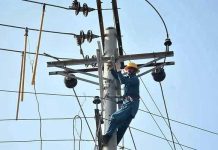ISLAMABAD: The cost of electricity from imported coal plants remains a significant issue, even with Regasified Liquefied Natural Gas (RLNG) contracts in place.
Speaking with Media, Mubashir Hassan, Managing Director of Alpha Renewables Private Limited, noted that RLNG was initially promoted as a greener, more affordable alternative to diesel and oil-based power generation. However, with rising electricity costs and financial pressures, its cost-effectiveness is now being questioned.
He explained that imported coal was introduced as a cheaper alternative to domestic and oil-based fuels, with the aim of reducing overall power generation costs.
“This shift was part of a broader strategy to diversify energy sources and reduce the risk of supply disruptions. But the cost of electricity from imported coal-fired power plants has not met expectations. Handling, transportation, and other logistical challenges have driven up costs, despite the potential for lower fuel expenses.”
He pointed out that fluctuating global coal prices have been a major factor in this discrepancy. The country’s dependence on imported coal makes it vulnerable to global market fluctuations. When international coal prices rise, local power producers incur higher costs, which are then passed on to consumers. While RLNG also faces price fluctuations, it tends to be more stable due to supply contracts.
The managing director of Alpha Renewables also emphasized the additional costs associated with the infrastructure needed for coal handling and processing. Building and maintaining coal-fired power plants require significant investments in infrastructure and technology to manage storage, pulverization, and ash disposal. These capital costs add to ongoing operating expenses, increasing the overall cost of electricity from imported coal plants.
In a conversation with Media, Tauseef Farooqi, former chairman of the National Electric Power Regulatory Authority (Nepra), mentioned that the country’s power sector has historically relied on a mix of energy sources, including thermal, hydro, and renewable energy. However, recent years have seen a greater emphasis on thermal electricity production, with imported coal and RLNG being key components of this approach.
He stated that the cost difference between imported coal and RLNG underscores the need for strategic energy planning. The country must consider the long-term stability and sustainability of its energy mix, in addition to short-term costs. Energy policy should strike a careful balance to ensure cost-effectiveness while diversifying sources, with a focus on the future.
He highlighted the critical challenge facing the country’s energy authorities. They must assess the cost structures of various energy sources, considering both long- and short-term impacts. Additionally, exploring alternative energy sources like renewables and investing in infrastructure improvements could lead to a more affordable and reliable energy future.
He recommended comprehensive reforms in the energy sector, calling for a multidimensional approach that includes better contract management, infrastructure investment, and a strategic vision for the future of energy. By addressing these issues directly, the country can move towards a more efficient and sustainable energy landscape. –INP






